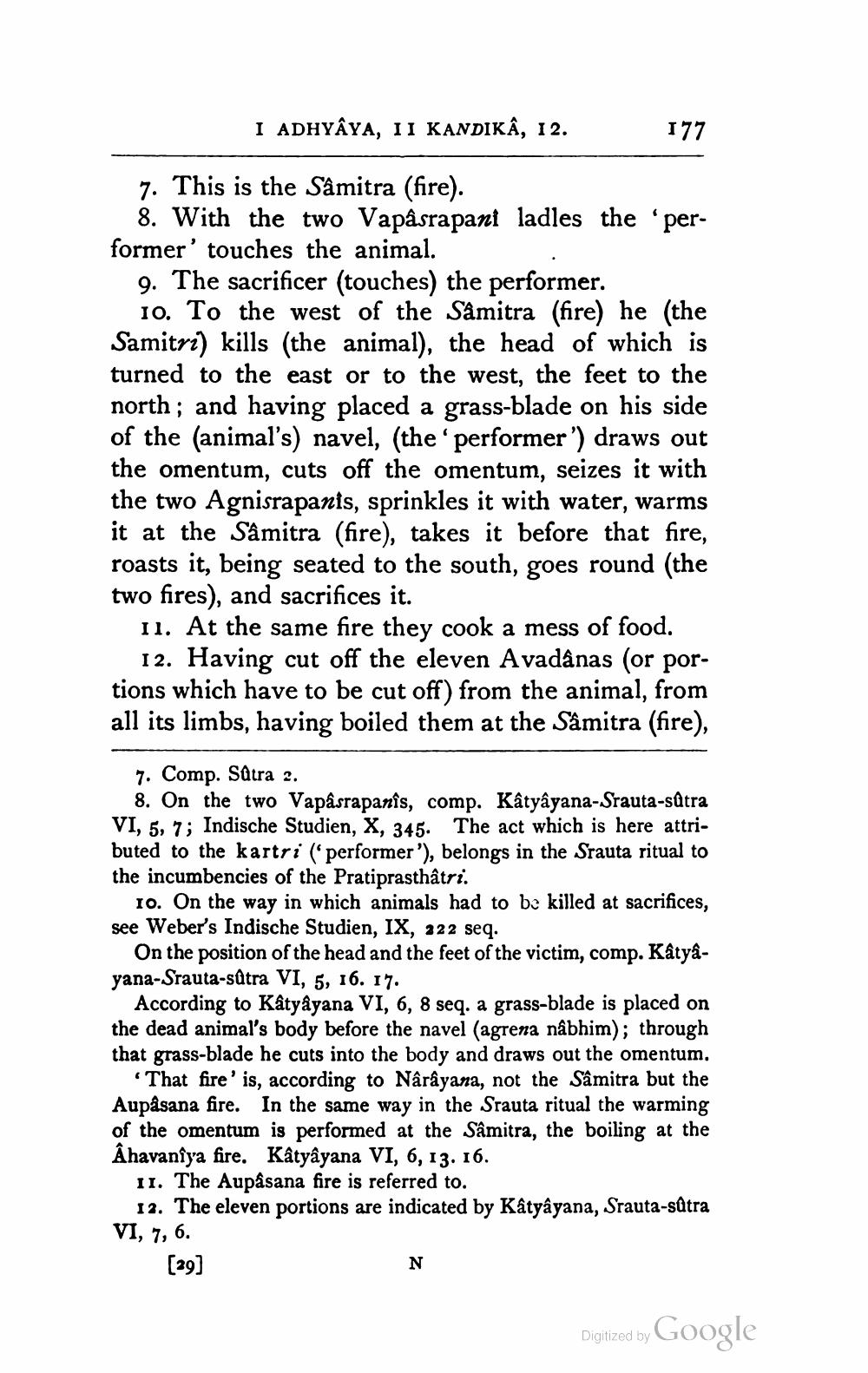________________
I ADHYAYA, 11 KANDIKÂ, 12.
177
7. This is the Sâmitra (fire).
8. With the two Vapásrapani ladles the 'performer' touches the animal.
9. The sacrificer (touches) the performer.
10. To the west of the Sâmitra (fire) he (the Samitri) kills (the animal), the head of which is turned to the east or to the west, the feet to the north; and having placed a grass-blade on his side of the (animal's) navel, (the 'performer ') draws out the omentum, cuts off the omentum, seizes it with the two Agnisrapanis, sprinkles it with water, warms it at the Sâmitra (fire), takes it before that fire, roasts it, being seated to the south, goes round (the two fires), and sacrifices it.
11. At the same fire they cook a mess of food.
12. Having cut off the eleven Avadanas (or portions which have to be cut off) from the animal, from all its limbs, having boiled them at the Sâmitra (fire),
7. Comp. Satra 2.
8. On the two Vapásrapanis, comp. Kâtyâyana-Srauta-stra VI, 5, 7; Indische Studien, X, 345. The act which is here attributed to the kartri (performer'), belongs in the Srauta ritual to the incumbencies of the Pratiprasthâtri.
10. On the way in which animals had to be killed at sacrifices, see Weber's Indische Studien, IX, 322 seq.
On the position of the head and the feet of the victim, comp. Katyayana-Srauta-sâtra VI, 5, 16. 17.
According to Katyayana VI, 6, 8 seq. a grass-blade is placed on the dead animal's body before the navel (agrena nâbhim); through that grass-blade he cuts into the body and draws out the omentum.
That fire'is, according to Narayana, not the Samitra but the Aupasana fire. In the same way in the Srauta ritual the warming of the omentum is performed at the Sâmitra, the boiling at the Âhavaniya fire. Kâtyâyana VI, 6, 13. 16.
11. The Aupâsana fire is referred to.
12. The eleven portions are indicated by Katyayana, Srauta-sûtra VI, 7, 6.
[29]
Digitized by Google




